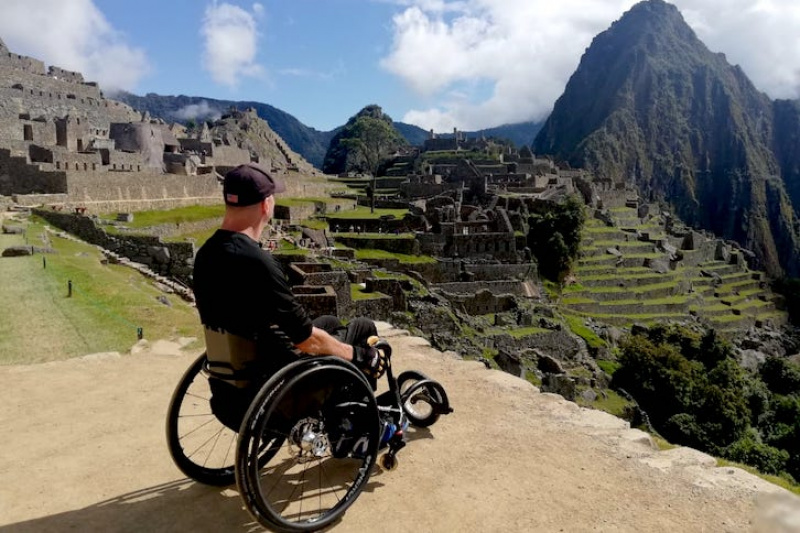Machu Picchu, one of the New Seven Wonders of the World, is a breathtaking destination that draws millions of travelers each year. But for those with disabilities or mobility challenges, visiting this iconic site raises a common question: Is Machu Picchu accessible for people with disabilities?
The answer is: partially accessible—with careful planning, support, and the right expectations, people with disabilities can enjoy Machu Picchu. While the ancient architecture and rugged terrain present challenges, there are solutions and options available to make the experience more comfortable and rewarding.
Accessibility at the Citadel
Machu Picchu was built in the 15th century on a mountain ridge at 2,430 meters (7,970 ft) above sea level, with narrow stone paths, steps, and uneven surfaces. The historic sanctuary wasn’t designed with modern accessibility in mind, so wheelchair access within the archaeological site itself is limited.
However, visitors with limited mobility can still enjoy a partial tour of the site, especially around the entrance and lower terraces, which offer incredible views and a sense of the grandeur of the Inca civilization. With assistance, some travelers have managed to explore further areas.
Tips for Visitors with Disabilities
If you or someone in your group has a disability and wishes to visit Machu Picchu, here are some tips to enhance your experience:
1. Travel with Assistance
Hire a local guide or travel companion experienced in supporting people with mobility challenges. They can help navigate uneven terrain and make the journey more manageable.
2. Choose the Right Entrance Time
Booking a ticket during less crowded hours (early morning or late afternoon) can help avoid crowds and make movement easier.
3. Consider Alternative Routes
If hiking the Inca Trail is not feasible, consider taking the train from Cusco or Ollantaytambo to Aguas Calientes, followed by a bus to the entrance of Machu Picchu. This route is the easiest and most comfortable for visitors with physical limitations.
4. Bring Mobility Aids
Foldable wheelchairs, walking sticks, or other aids can help, but it’s important to note that some sections are only reachable on foot or with support. There are no official ramps inside the archaeological zone, so assistance may be required.
5. Stay in Accessible Accommodations
Aguas Calientes (Machu Picchu Pueblo) offers several hotels with accessible rooms and amenities. Booking in advance ensures availability and comfort.
Progress Toward Inclusion
While full accessibility is not yet a reality, the Peruvian government and local tour operators are increasingly aware of the importance of inclusive travel. Some private tours now offer customized services for people with disabilities, including assistance at the site, adapted transport, and support throughout the journey.
Book Your Machu Picchu Trip with Peruways
At Peruways.com, we’re committed to helping every traveler experience the wonder of Machu Picchu. Whether you’re looking for accessible travel options or need help planning a visit for someone with special mobility needs, our team is here to assist.
We offer train tickets, bus transfers, and guidance on how to choose the best entrance and ticket type based on your needs. If you’re unsure where to start, reach out—we’re happy to help make your Machu Picchu journey as smooth and memorable as possible.
Final Thoughts
Machu Picchu may not be fully wheelchair-friendly, but with planning, assistance, and the right mindset, people with disabilities can still experience its magic. Whether it’s soaking in panoramic views or walking among ancient stones, the journey is always worth it.
Start planning your visit today with Peruways.com—and take one step closer to the adventure of a lifetime.










Comment (0)